Duplicating trees Part 1 - taking them apart
We are no longer building saddle trees, but we have two videos about how Western saddles fit horses available on our westernsaddlefit.com website.
We have had a run on duplicate trees the last few months. Maybe the economy is such that people are willing to spend the $ to replace a tree in a saddle rather than buy a new one. Whatever the reason, we have had “bits of saddles in a box” in our back room constantly since early in the year.
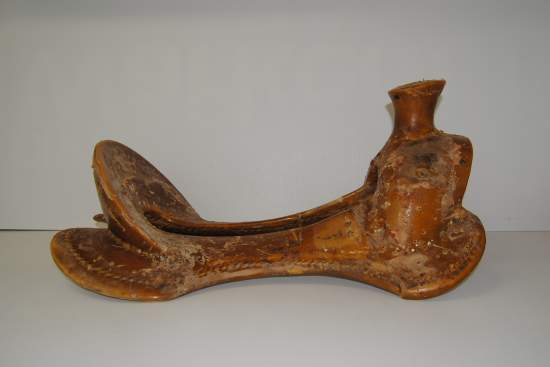 |
| It may look OK, but it sure squeaked and bent in the middle. |
Why do people want trees duplicated?
Most commonly, it is because the tree broke, but right up there in numbers are people replacing trees that don’t fit well. Some have been from old saddles that still have good leather but the tree doesn’t fit today’s “normal”, and some have been from new saddles that just aren’t working for the horses they are riding.
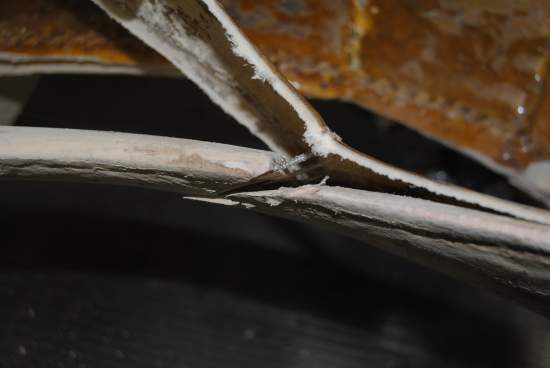 |
|
Taking off the rawhide, we found both bars broken along the angle of the nails |
Whose trees have we duplicated?
We have duplicated poor quality trees from unknown makers, trees from current production companies, trees from companies which have been out of business for years, and even one or two historical trees. We have also had the opportunity to duplicate trees from a few different hand makers – current and no longer building. It is really interesting to see the different ways makers do things, and we have learned a lot by doing these.
What do we need to duplicate a tree?
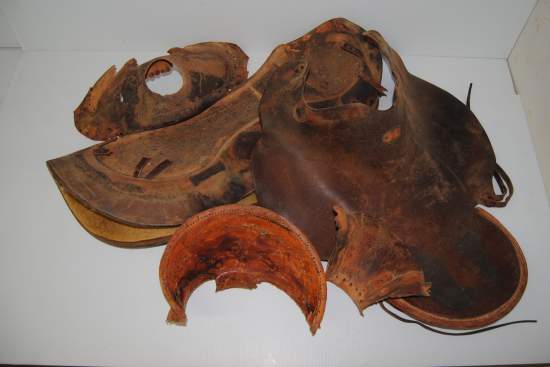 |
| This maker didn't send quite everything. The rigging and back jockeys didn't come. |
We ask that the old tree and all the leather that goes on the tree be sent to us. Basically everything but the strings and fenders. Why? Because we don’t have a duplicating machine that reads one part and turns out an identical one. We have to shape the pieces as close as possible to the original without knowing any of the original angles, patterns, measurements, etc. And we do it the same way we shape all our trees, as seen in our Building a Saddle Tree section. So as Rod shapes the pieces, he tests them out by fitting them into the leather as he goes to make sure they will fit as closely as possible. We have done a few where the maker just sent us the tree, but I’m sure they had a lot more work to put the leather back on than if they had sent us what we asked for originally.
Initial work up
It is always interesting opening the box to see what shape the tree and saddle are in. We always try to get the wreck story if there has been one, usually for the entertainment value. When the horn and the cantle are in the same end of the box, it makes figuring out what the problem is a little easier…
First, we measure the tree up, down and sideways, comparing angles to our trees and basic shapes to some of our current patterns. We can’t duplicate all the angles the other makers used because some of them you can’t even measure once the parts are finished. On others that pesky third dimension affects things and getting just two out of three right won’t cut it. Besides, we can’t fit the tree the same way the old one fit. The shapes are just too complicated for us to be able to match, and most customers want us to fit them our normal way anyway. So we measure what we can measure, compare what we can compare, and are grateful that leather molds well…
Dismantling the tree
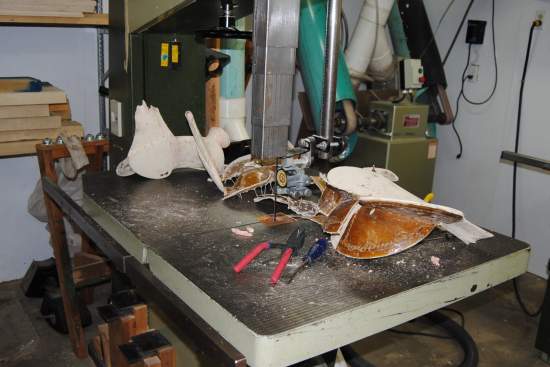 |
| Taking off the rawhide means lots of mess and often skinned knuckles. |
Once we have it all measured in the rawhide, we take the rawhide off. This can be relatively easy or very difficult, depending on the quality of hide used. “Chicken skin” rawhide rips off easily, good quality hide will break wood rather than unbend. Whether the maker used ring shank nails, regular nails, or staples, and how long they are makes a difference, as does the quality of wood underneath the hide. Even ring shank nails pull out of pine easily, though they are harder to pull out of rawhide than smooth nails. Pulling nails out of the hardwood sections if the tree has them – that’s a lot tougher. We’ve taken to sanding good hide off the edges of the tree, fork and cantle rather than trying to cut the lace and remove it that way. We do far less damage to the tree. Rawhide is tough stuff!!
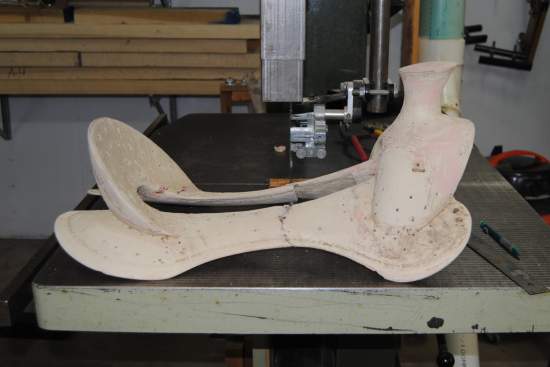 |
| The bars have been stuck back together and the tree propped up as close as possible to the original shape. |
Once the hide is off, we measure the tree up again in the wood before taking the pieces apart to use to make patterns. “Interesting” is a good word to describe how some trees are put together. Again, there is quite the variation in fasteners used to assemble the trees. Rarely do we find trees that are glued together with good quality glue. Either there is nothing, or occasionally a squiggle of hot glue used to tack the pieces together before they shoot the staples in. And we sometimes find layers of putty or bondo, surprisingly thick at times, which have been used to fill the gaps between the pieces so they can be set at the desired angles rather than making the angles on the wood match.
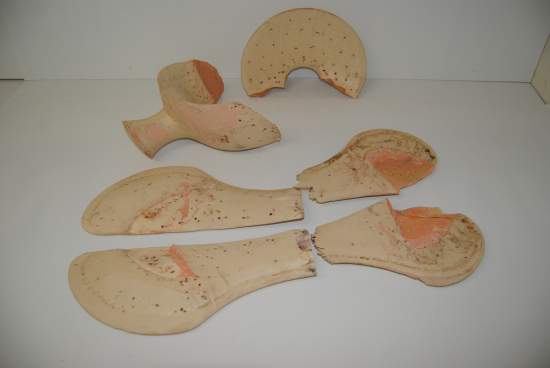 |
| In pieces - original and broken - ready to use as templates for patterns. |
Once we have it all apart, we can measure things on the pieces that can’t be measured on a tree that is put together. Then we start figuring out how to build the replacement, but that will be another post.
